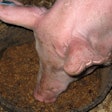
The suggested potential link between dog foods with legumes and cases of canine dilated cardiomyopathy (DCM) is quite unique in nutritional science. Historically, nutritional science has been led by hypothesis development followed by well-controlled studies to test the hypothesis, rather than collections of consumer data and clinical observations as the U.S. Food and Drug Administration’s (FDA) DCM investigation has focused on. The root cause of disagreement that has transpired stems from dogmatic positions, which have led to insurmountable ingredient demonization without peer review and without complete study of all known sciences involved. This approach has troubled me deeply.
DCM has been considered a genetic or heritable disease in dogs for decades, rather than a disease that can be compartmentalized into two types: genetic versus nutritional. This peer-reviewed position of genetic predisposition appeared to be downplayed in the current DCM situation due to the urgency of social media and the rapid opening of a complaint portal. In fact, FDA reported the cases were “unusual” because some occurred in breeds not typically genetically prone to the disease.
Are the breeds reported in recent DCM cases unusual?
Without the review of breed pairings or genetic assessment, how could this be a fair conclusion? What should we know from the scientific literature?
Sisson (1995) stated there were estimates of DCM in dog populations reported in the literature; Fioretti (1988) reported 1.1% DCM in 7,148 dogs of multiple breeds; and Purdue University reported 1,681 cases in 342,152 dogs of multiple breeds (0.5%). Tidholm (1997) stated that DCM is a disease not only affecting certain dog breeds as has been suggested, but it is quite common in many medium-sized and large-breed dogs.
All of this was reported well before legumes were used in pet foods.
It would seem DCM is more common than has been communicated. Literature revealed at least 26 breeds as “high-risk” (over 1.1% incidence). Review of broad DCM studies identified an additional 30-35 breeds reported. The American Kennel Club has registered 193 breeds as of 2019 where the genetic pools are often shallow. It should be noted that purebred dogs are at much higher risk than are mixed-breeds. Among the limited FDA data, more than 75% of dogs were in the high-risk category.
What known methods were taken to separate genetic from nutritional cases?
Research has clearly shown that genetic predisposition increases the likelihood that a particular disease might occur. Common genetic disorders are quite well known among humans (e.g., cystic fibrosis, Down syndrome, sickle cell anemia) and not debated. Familial history (i.e., breeding pairs) is counted as a strong risk factor. Progress has continued to identify specific genes to explain genetic susceptibility to disease. Diseases are complex in their etiology, causing some to believe that genetic architecture must be multi-factorial rather than embracing genetic predisposition alone. However, does the literature suggest that genetic predisposition of DCM impairs specific metabolic pathways involved in nutrition?
Dogs often have been used in the study of DCM in humans to help identify the potential genetic markers associated with the disease. Dogs frequently are selected through breeding for therapy, hunting, speed, agility, endurance, coat-condition, color, shape and temperament.
Gilliam (2016) sequenced the complete genome of 145 dogs from 69 breeds with various inherited canine diseases, most of which were inherited recessively. DCM segregates in the Standard Schnauzer showed a pattern consistent with an autosomal recessive mode of inheritance. An additional 753 Standard Schnauzers were examined, with 21 of these having DCM (2.8%). Twenty of these 21 DCM-dogs had a RBM20 deletion allele (similar to humans with DCM). All the other dogs were DCM-free and did not have the RBM deletion allele.
Rishniw (2011) completed genome-wide association studies to identify several gene candidates for canine heart disease. Candidate genes identified in human DCM failed to identify similar genes in DCM in Doberman Pinschers; however, there was involvement of a mitochondrial gene associated with glucose metabolism (pyruvate dehydrogenase kinase) previously unrecognized in human DCM cases.
In 2012, Ito reported that the molecular mechanisms of taurine depletion-related cardiomyopathy remained unclear, but Mozaffari (1986) demonstrated taurine depletion altered myocardial carbohydrate metabolism. This involved a specific protein in the mitochondria that transformed pyruvate to acetyl-CoA, which was identified as pyruvate dehydrogenase kinase identified in DCM genetic evaluations.
Could these pathways be further impaired through improper nutritional regimen?
Over 40% to 50% of dogs are overweight and well over 15% are obese. This suggests that consumers are feeding more than 30% to as high as 50% more calories through treats, chews, rawhides, scraps, supplements, toppers, etc. This over-feeding will be addressed in a future article, but it is safe to say overall feeding regimens are not complete and balanced even when the commercial dog foods offered are. A food regimen with incomplete fortification and imbalanced nutrients along with complex food structures and excess calories could lead to many metabolic upsets (e.g., glucose metabolism, potentially, in DCM). Obesity is a strong health risk in human patients with DCM.
We are all saddened that pets suffer from DCM. However, science has documented that DCM is genetically predisposed and related to improper pairings. Rather than elevating theory to dogma and consumer complaints to facts, should we not endeavor to limit demonization and help consumers understand breed inheritance, proper nutritional principles and feeding practices?
See more on communicating to pet parents.














